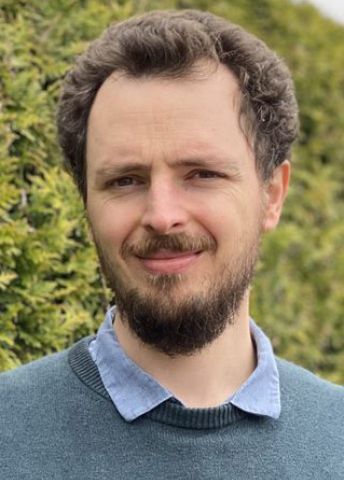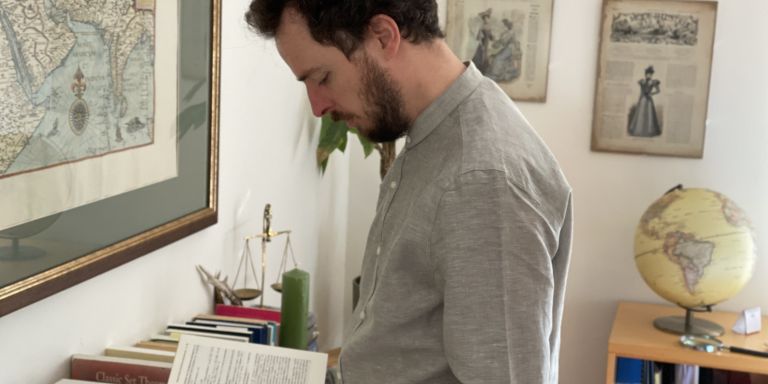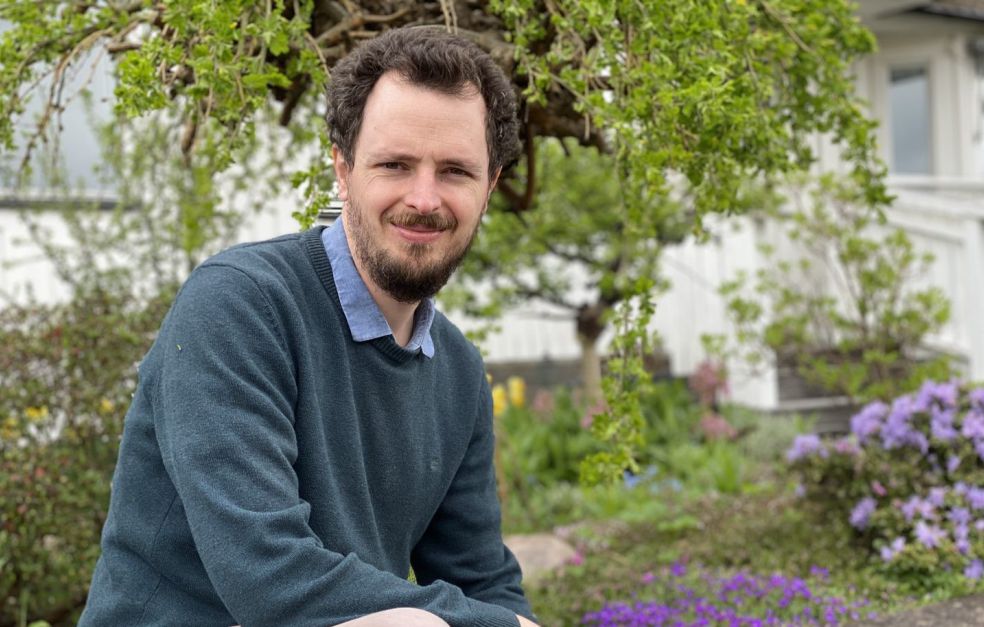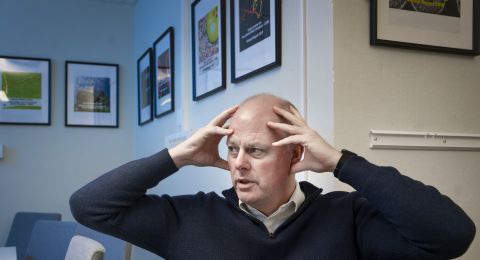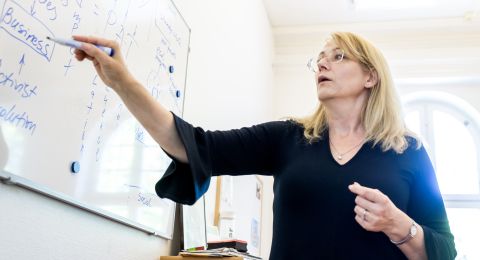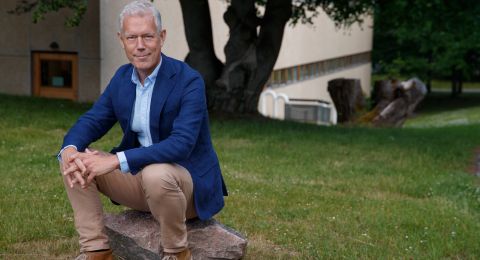The concept of truth has interested philosophers and thinkers for millennia. What is truth, and how can true statements be distinguished from false ones? Can a mathematical proof be trusted? Graham Leigh is a logician, and is approaching these topics using modern interdisciplinary methods.
Graham Leigh
Associate Professor of Logic
Wallenberg Academy Fellow, prolongation grant 2020
Institution:
University of Gothenburg
Research field:
Logic in the intersection between mathematics, philosophy and theoretical computer science
His research lies at the border between mathematics, philosophy and computer science.
“Foremost, I regard myself as a logician. My undergraduate degree was in mathematics, and I often use mathematical approaches. But I am equally interested in philosophical questions.”
Logic may be described as the science of reliable mathematical proof. Philosophy uses mathematics as a tool to analyze arguments. In mathematics logic is a way of building a solid foundation for the subject. And the origins of computer science lie in logic. Logic provides the framework to describe the algorithms on which computer science is based.
“Logic binds these subjects together,” says Leigh.
When he was chosen as a Wallenberg Academy Fellow in 2015 he transferred his research from Vienna to the University of Gothenburg. His presence has made Gothenburg an important center for the field of logic.
“Thanks to the Wallenberg grant, I’ve been able to recruit a number of researchers, and we have built something of a reputation. We’re definitely on the map now,” he comments.
Researching the concept of truth
Over the past few years Leigh has explored philosophical and mathematical conceptions of truth. There are a number of ways to approach the nature of truth based on different arguments, thought processes and philosophical discussions. One issue is how these statements can be expressed in a way that also makes it possible to analyze them, compare them, and develop a theory. One way is to try to transpose the language into mathematical terms, and develop definitions according to a mathematical understanding.
“I’ve endeavored to provide a more precise explanation of phenomena that don’t naturally fit into traditional or more conventional logical methods.”
But it is a constant challenge to delimit the research questions as clearly as possible. With the benefit of hindsight, Leigh points out that the latest project generated at least as many questions as it answered.
“The first project has yielded a great deal of fundamental knowledge, but has also raised new questions, which I hope to resolve in my new project.”
Cyclic proof
Leigh has chosen to focus on circularity and fundamental questions concerning the nature of cyclic proofs. He uses a photograph of Frösöstenen, Sweden’s northernmost rune stone, to illustrate the phenomenon.
“Midgårdsormen – the Midgård Serpent – is depicted on the stone. It’s biting its own tail and embodies the circularity of life, the recurring seasons and the perpetual cycle of life and rebirth.”
But circularity is also a phenomenon in modern science. Leigh wants to enhance our logical ability to meet the challenges posed by circularity. These include our powers of self-insight and our theories of time and space.
“It’s also about a wealth of mathematical structures such as fractals – self-similar patterns – and about how we can analyze them, and define these objects without first having to break them down into a hierarchy, losing much of their interesting, complex structure in the process.”
Leigh often uses mathematical methods. The idea is to incorporate circularity in mathematics’ most fundamental concept – proof – the chains of reasoning that form the very basis of how we develop and verify scientific knowledge.
“The project is founded on a dynamic view of the concept of proof, in which we regard it as endless games in which the laws of logic are pitted against complex mathematical systems. The truth of our hypotheses is determined by who wins the game.”
These “cyclic” proofs represent a conception of verification or refutation that is specifically adapted to different reasoning on cyclic phenomena, for example in geometry, logic or algorithms. One goal is to formulate a uniform framework for the theory of cyclic proofs and their application.
“Most of all, I hope the project will make it possible to transfer knowledge between different theoretical frameworks.”
More efficient algorithms
With the possibility of establishing a robust theory for cyclic proofs, the question of applications may then arise, e.g. to analyze algorithms and computations in safety-critical computer systems.
“Computers can be trained to search for cycles in logical reasoning, and we may be able to create new tools to verify and certify systems on which modern society is dependent, such as air traffic control, security software and self-driving vehicles.”
Leigh himself does not need complicated apparatus for his research. All he requires is a pen and paper and, he stresses, colleagues:
“In theory, I could sit alone in my office for ten years or so, but ideas are constantly popping up – creating an urgent need to discuss them with researchers from other fields.”
“I’m grateful that my research ideas are appreciated. The Wallenberg Academy Fellow scheme represents long-term support, which is essential for research of this kind – and is also valuable for the individual sense of security. It’s truly refreshing not to have to adapt research questions to a narrow agenda.”
He enjoys the theoretical perspective, which he considers to be intrinsically dramatic.
“Perhaps in two years I’ll discover I’ve been asking completely the wrong questions. But just a modicum of progress opens the lid on new interesting questions. And I have no idea how the project will finally end up.”
Text Nils Johan Tjärnlund
Translation Maxwell Arding
Photo Graham Leigh
